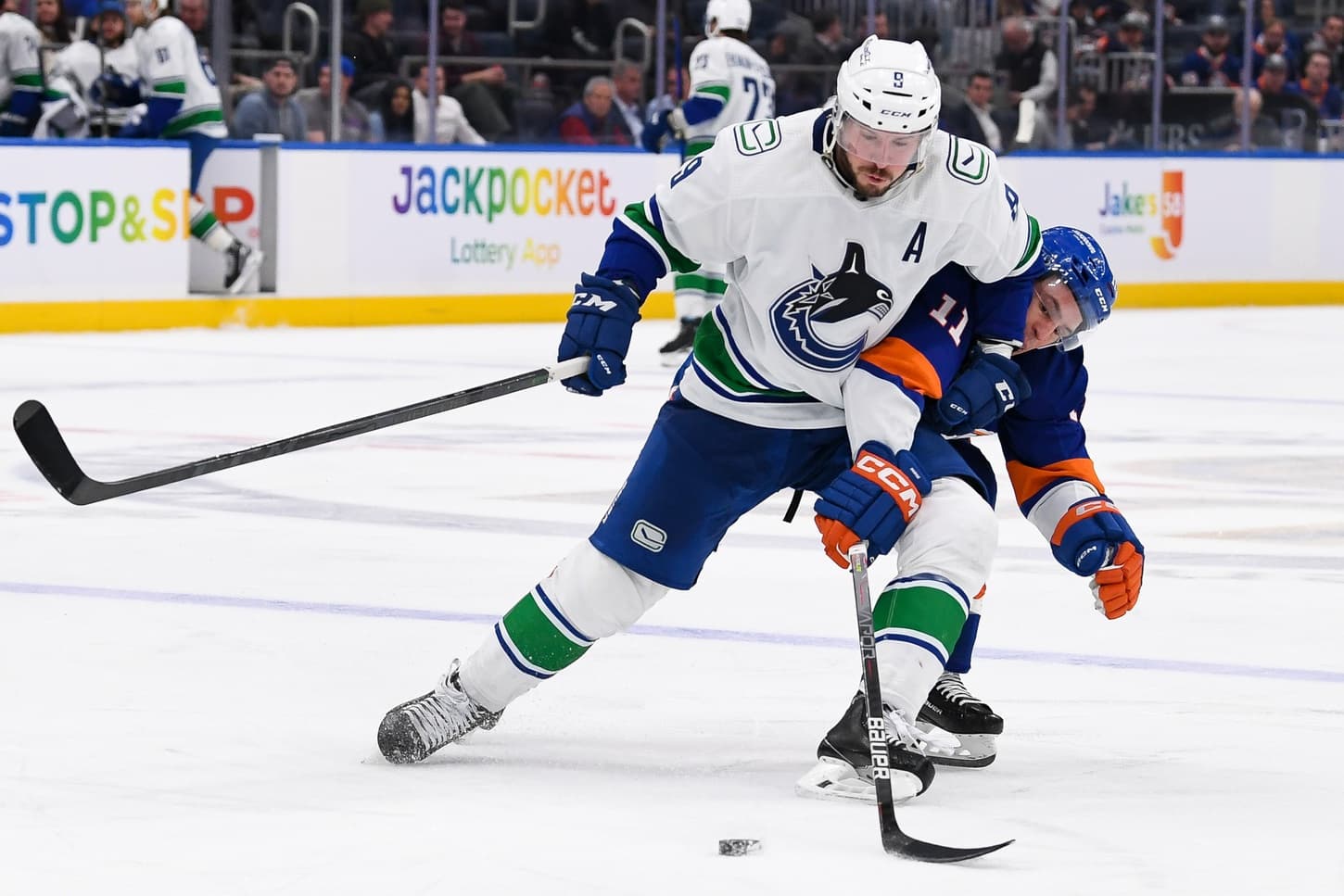If multiple reports are to be believed, the Vancouver Canucks are receiving calls from multiple teams about the possibility of trading for JT Miller.
At this point, we have no idea if the Canucks are actually answering those calls. But, gosh, we sure hope so.
Report: Multiple teams have called Canucks about a potential J.T. Miller trade https://t.co/cZ7ydjEEXy
— CanucksArmy (@CanucksArmy) February 19, 2023
It is now widely accepted that the best offer the Canucks received over the last calendar year for Miller was the first round pick, Nils Lundkvist, and Filip Chytil package from the New York Rangers, floated sometime ahead of the 2022 Trade Deadline.
It is also now widely accepted that any offer the Canucks might receive today would be a lesser one.
On the one hand, there’s temptation to look at that harsh truth and see reason to double-down on the decision to not trade Miller, and to sign him to that seven-year, $56 million extension. If the team already missed their shot at the best possible return for Miller, wouldn’t trading him now look foolish?
The other hand, however, understands that this is a sunk-cost fallacy. It also understands that pining for a missed best opportunity for a trade is a great way to miss out on the last opportunity for a trade, and that’s perhaps the point at which we’ve now arrived.
If teams truly are still interested in taking on Miller, extension and all, at the 2023 Trade Deadline, then this could be the Canucks’ last real chance to move Miller at a profit — and without having to pay for the privilege.
POHO Jim Rutherford and GM Patrik Allvin, in trading Miller for a lesser return now than they would have got a year ago, would have to admit some level of mistake-making. But they should also be able to look at how much lower the offers they’re receiving today are, and be able to project that trend a few years forward.
Miller is, unfortunately and entirely predictably, already regressing back from what was clearly an anomalous career high of 99 points in 2021/22. Right now, he’s pacing for about 75 points, which is much more in line with his typical Vancouver production, last year aside. In fact, Miller’s 2022/23 PPG of 0.91 is still miles ahead of his overall career average, which suggests that more regression is eventually likely. It might not even be best termed as ‘regression,’ but more a return to the norm after one, brief standout year.
Either way, the days of Miller crossing that 90-point threshold are almost certainly over. One-and-done.
Miller will turn 30 in mid-March, moving him firmly out of an NHL forward’s expected prime. Now, as fans of the Canucks well know, this is not a guarantee of anything. The Sedin twins famously had their best seasons right around the age of 30.
But a forward who is already showing signs of regression on the cusp of their 30s? That is a player who can be safely predicted to be on the downward slope of their career. And that is a player who will thus continue to shed trade value as the months and years wind on, especially attached to such a massive extension.
It’s not difficult to find cautionary tales around the league. In fact, it might be harder not to find cautionary tales.
How many veterans in their early-to-mid-30s are signed to long-term contracts and still tradeable a few years in? Not John Tavares, not Sergei Bobrovsky, not Tyler Seguin, not Jamie Benn, and certainly not Oliver Ekman-Larsson.
The vast majority of these contracts become anchors. Albatrosses. Players who retain a decent trade value well into such extensions are the exception, not the rule. And JT Miller just doesn’t have the makings of an exception.
If the offers for Miller have dramatically lowered in the 2022/23 season, before that extension has even kicked in and with Miller just a season separated from those 99 points, then what are they going to look like a year from now? Unless Miller experiences an improbable second scoring breakout, he’ll just be one year older and one year further away from that career high.
If a team were to trade for Miller right now, they’d get him from age 30 to age 36. But if they traded from him a year from now, they’d get him from 31 to 36. Two years from now, and it’s 32 to 36. All the while, that $7 million price-tag remains attached.
It’s not hard to see how Miller’s trade value will continue to decrease, and how quickly it will cross that threshold from positive value in negative. That could happen within a year. Look at the Calgary Flames and Jonathan Huberdeau, already untradeable a season before his massive extension locks into place.
But if Miller doesn’t have negative value within a year, he’ll almost certainly be there within a few years. And, really, that’s the kicker.
The Canucks can hang on to Miller, and ride out this remaining limited window of positive value. But for what?
The odds of him rebuilding any trade value are slim to none. The odds of the Canucks becoming genuinely competitive in the same timeframe are perhaps even slimmer.
The odds of Miller’s contract becoming a millstone right around the same time that the Canucks hope to start contending, however, are exceptionally high.
Right now might not be the peak of Miller’s trade value, but since time doesn’t move backward, it’s the practical peak. The value they’ll get right now is the best that they’re ever going to get from here on out.
More than that, however, if the present offers an opportunity to get out from under the Miller extension before it turns sour, it’s an opportunity that the Canucks cannot afford not to take.
Regrets are inevitable. Doubling down on regrets should still be avoided at all costs.


